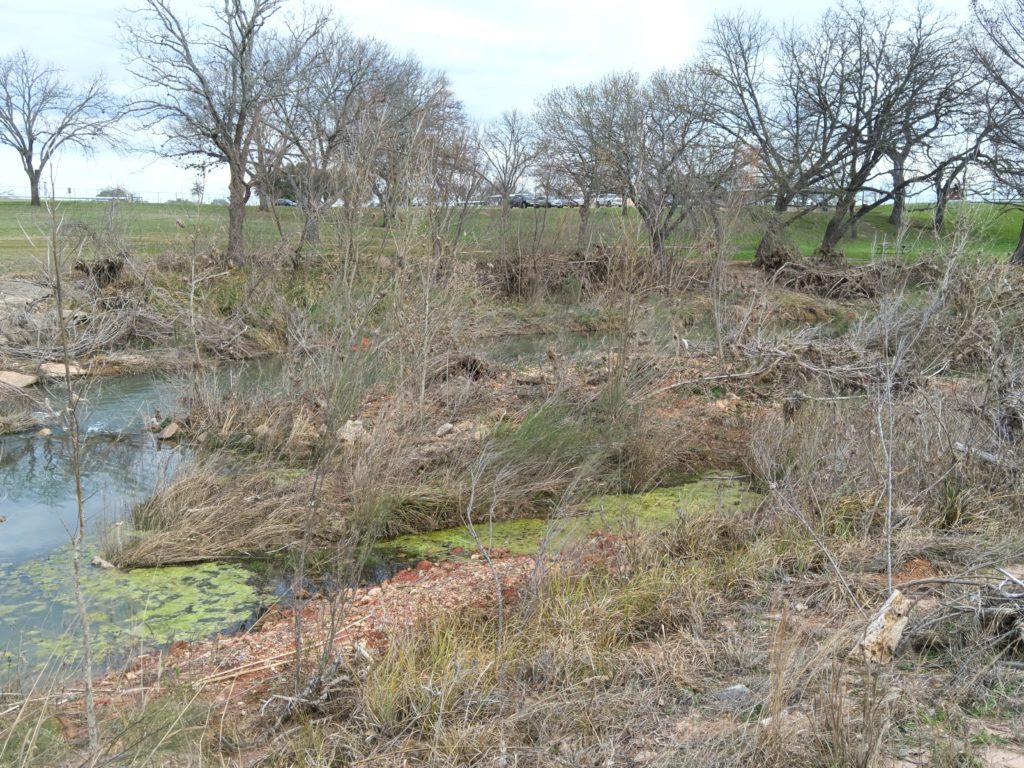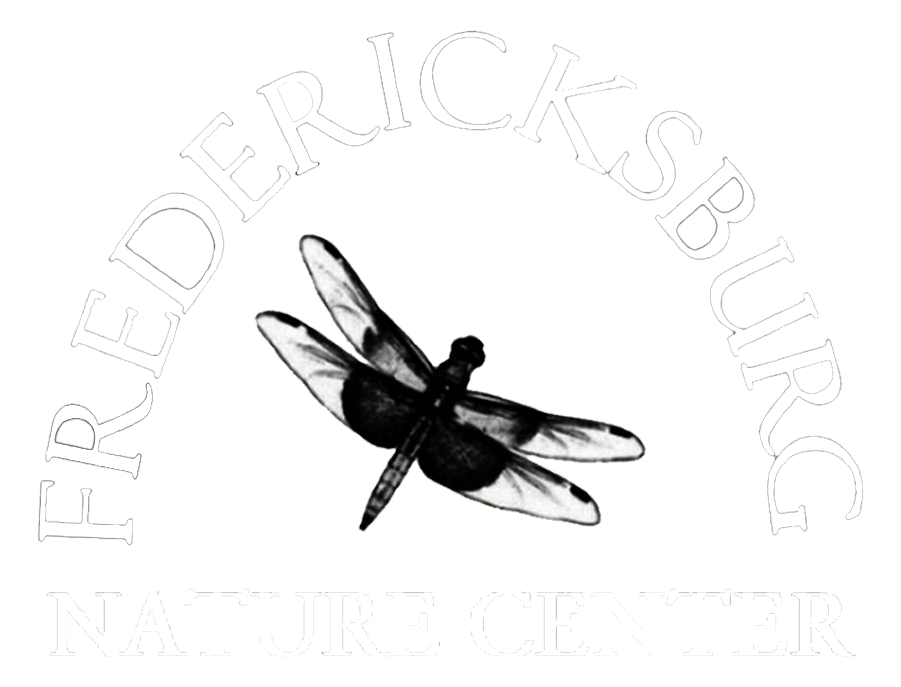Area 1: Sandstone Deposits
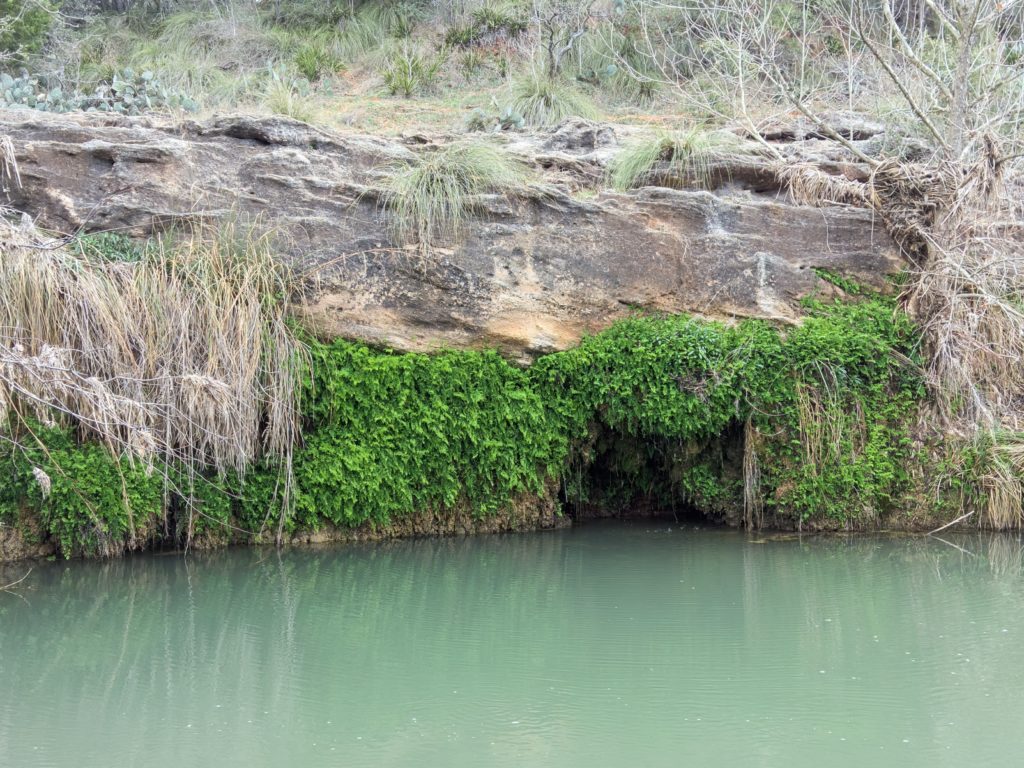
Sandstones deposited during the time of the dinosaurs roamed this part of the Texas Hill Country over 100 Million years ago. During the Cretaceous Period, 135 Million years ago, a warm shallow ocean covered all of the Llano Uplift area, located just north of Fredericksburg, Texas fluvial systems were carrying the decomposed granitic sand and gravel to the encroaching shoreline. About 110 Million years ago, the sandstone in the outcrop across the creek was deposited in a setting similar to depositional system working along the Live Oak Creek today.
Area 2: Shaded Trees
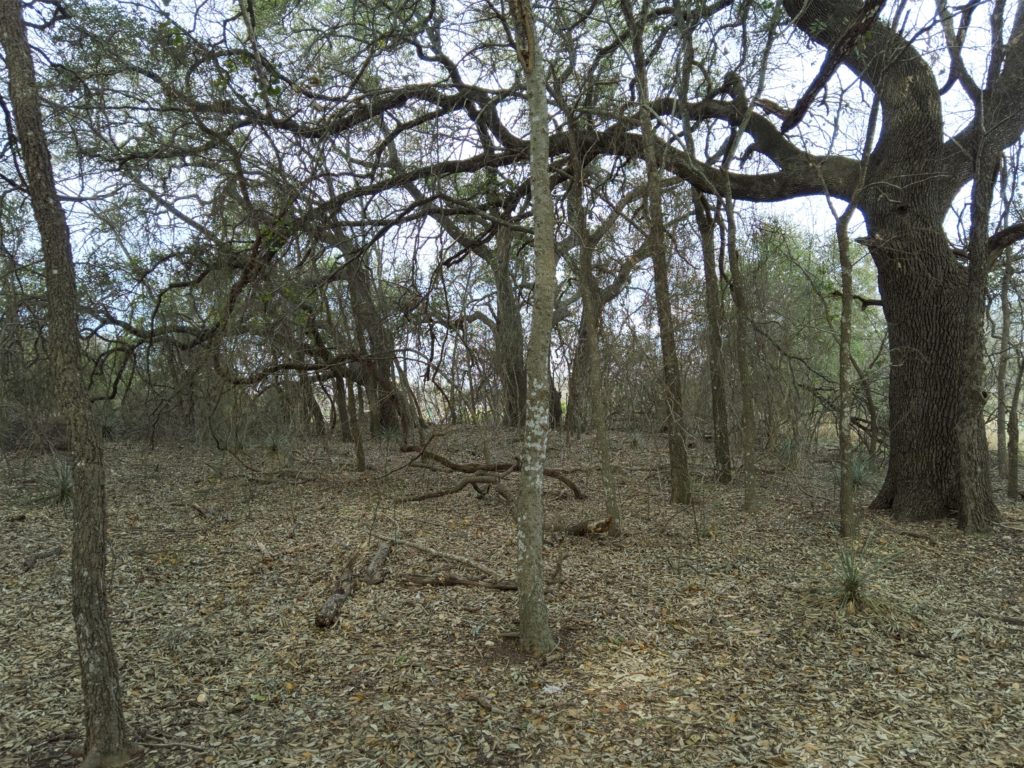
Trees use shade to reduce the competition from ground cover plants and to reduce potential wildfires that might destroy them. Here is the small remnant of a live oak forest whose canopy has shaded out most of the light needed to sustain much plant growth at ground level. The small spindly trees are mostly hackberry trees that are desperately trying to reach the sunlight. These hackberry saplings were planted by the birds, whose droppings contained live hackberry seeds. There are grasses and forbs growing in the understory.
Area 3: Native Prairies
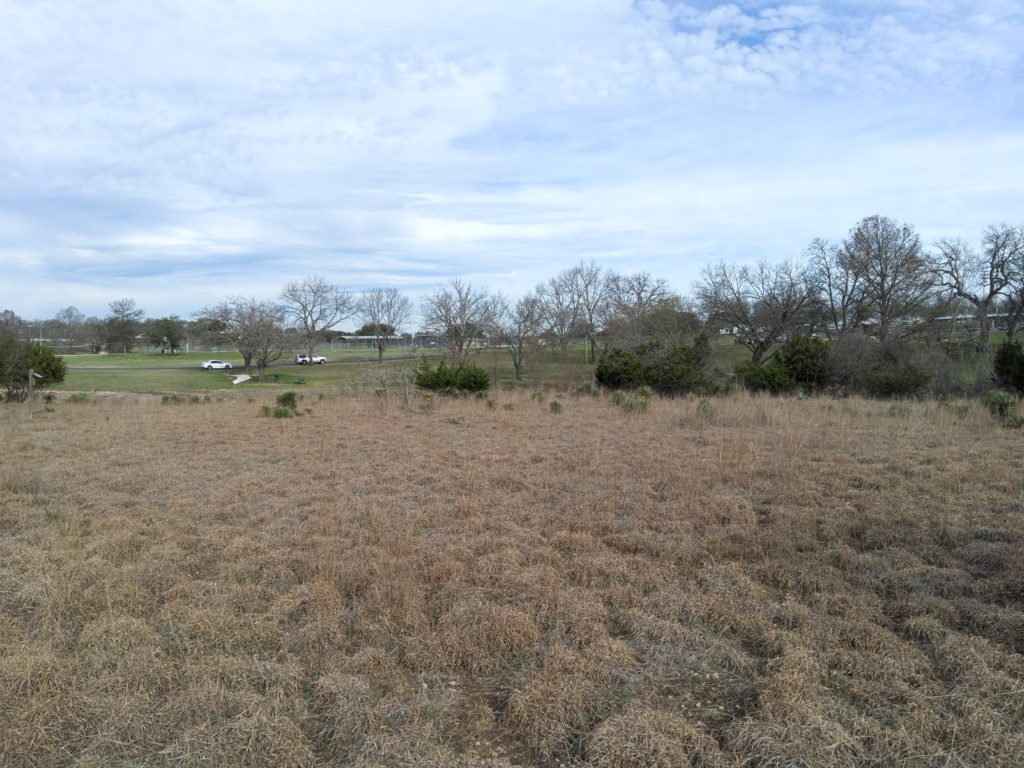
Native prairies, a mixture of grasses and wildflowers, once covered vast areas of Texas, including the Hill Country. Mixed grass prairies were the dominant habitat of the Hill Country prior to European settlement in the mid-nineteenth century. Prairies in this area were more related to the savannah habitats where grasslands and mixed woodlands were competing. The prairie grasses contained both long and short grasses, including big and little blue stem, switchgrass and various gramas. Prairies depend on periodic wildfires to keep the trees from invading their territories. Grasses send down root systems to channel water into the sub-stratum, as well as keeping soil loose, yet free from erosion.
Area 4: Blackjack and Post Oak Trees
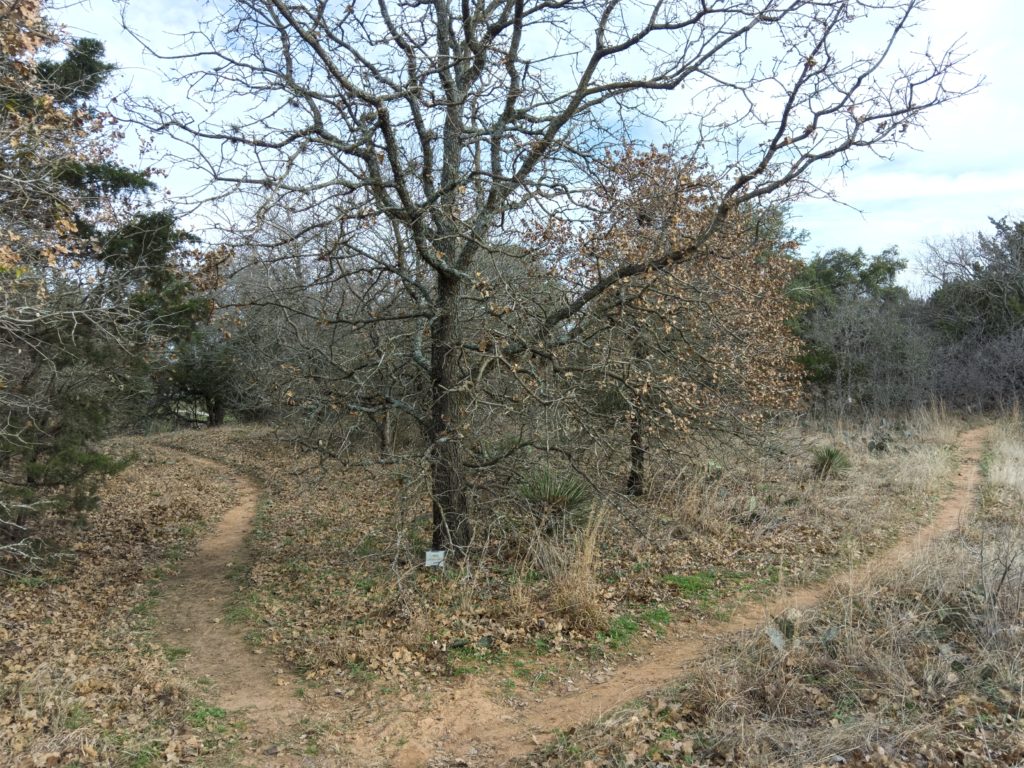
Blackjack and Post oaks are trees that from open forests in higher, dryer sandy areas of the region and state. Uplands sandy soil areas are often inhabited by post oaks and blackjack trees as you see along the narrow corridor. The open field south of the fence was likely dominated by these two oaks. Post oaks and blackjacks do not often form dense canopies like live oaks and other reparian trees. Grasses and briars, and low brush can survive in this more open woodland setting. Mature post oaks and blackjacks have thick bark to help them survive wildfires.
Area 5: Cactus and Succulents
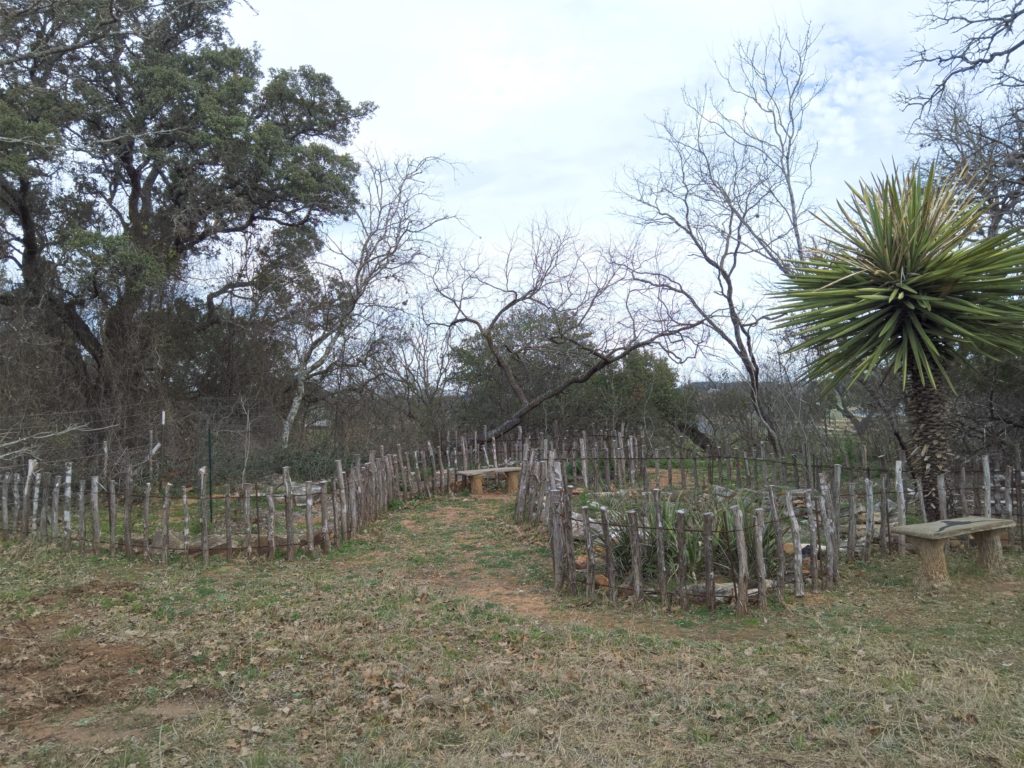
The Edwards Plateau is home to more than fifty cactus species. Most native cactus plants have red or yellow flowers.
Area 6: Rock Settlements
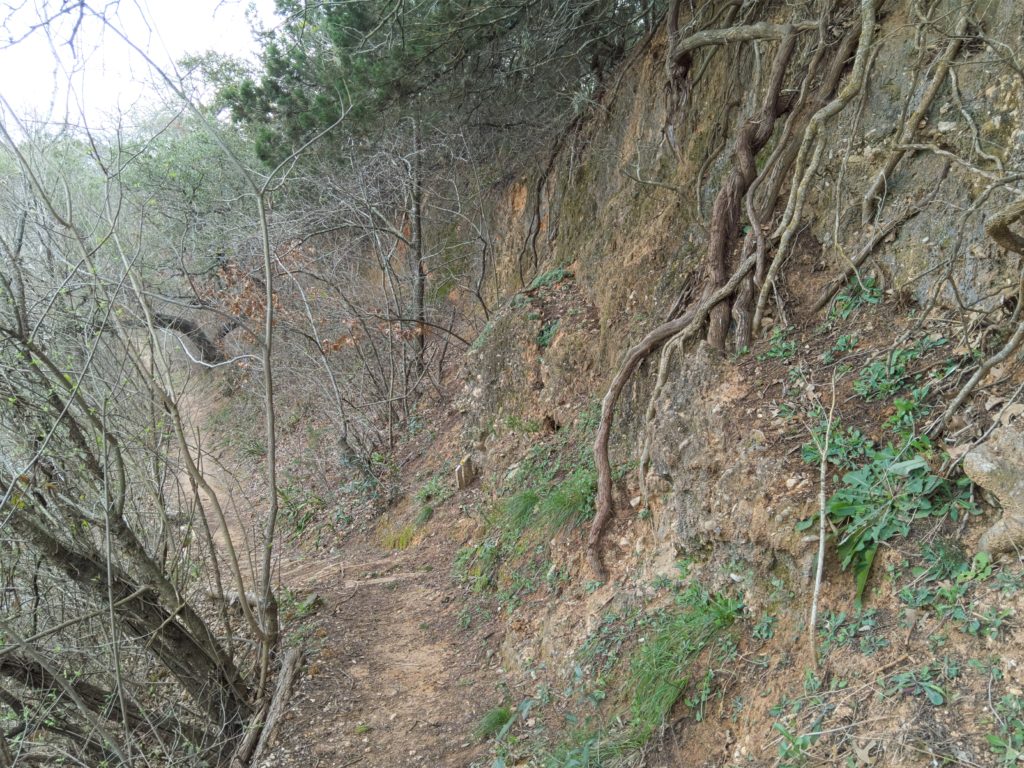
Recent sediments of a few tens of thousands of years directly overlie sediments over 112 million years old creating a gap in the rock record of over 100 million years. The cliff along the edge of the lake is composed of Pleistocene and recent sediments deposited by Live Oak Creek. At one time this area of the lake was part of a gravel pit that supplied construction materials to the area. Further down the lake shore (see marker) there is an unconformity surface between the gravel bed and the red claystone.
Area 7: Beaver Marks
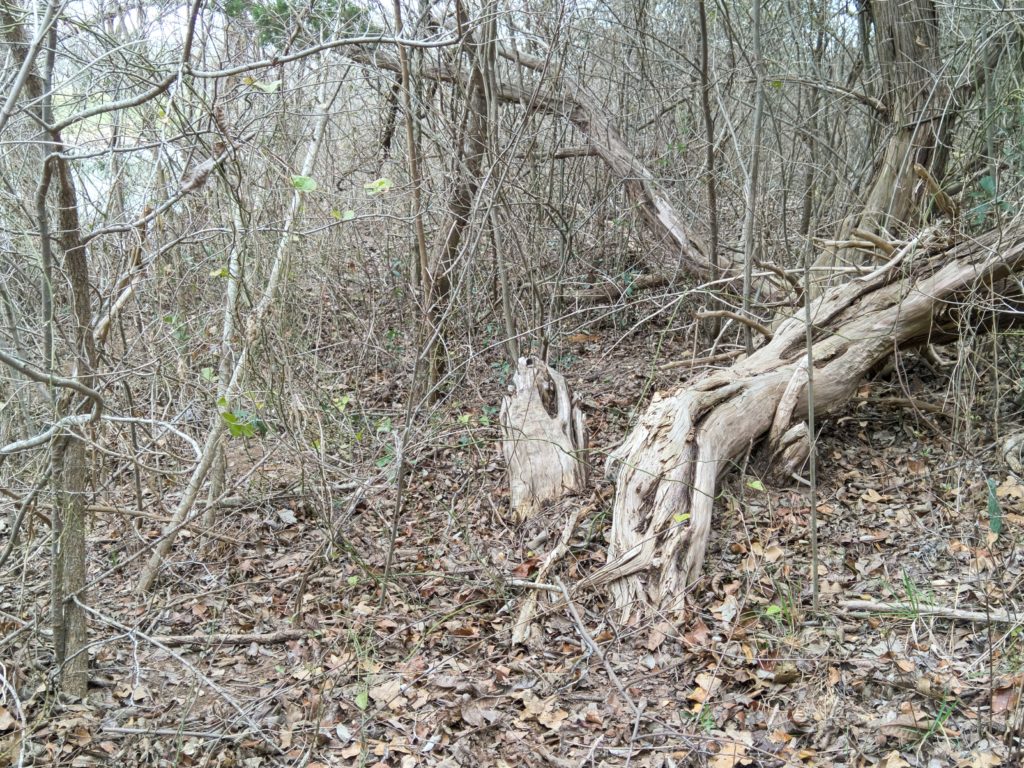
Beavers live in our area and create “hour-glass” shaped marks on the trees found near the water’s edge. Beavers made the gnawing marks on the juniper trees. They typically make an hour glass shaped cut on trees they choose to harvest. They apparently did not realize the wide canopy of the juniper is supported by other trees. Imagine the frustration of having gnawed on a tree and it did not fall. We also have nutria, which look like a beaver, in the lake. Nutria are exotic mammals introduced into Louisiana for possible fur business.
Area 8: Marsh Area
